Understanding Bathroom Fitting Costs: An Analysis
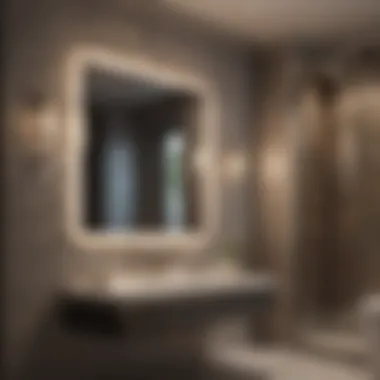
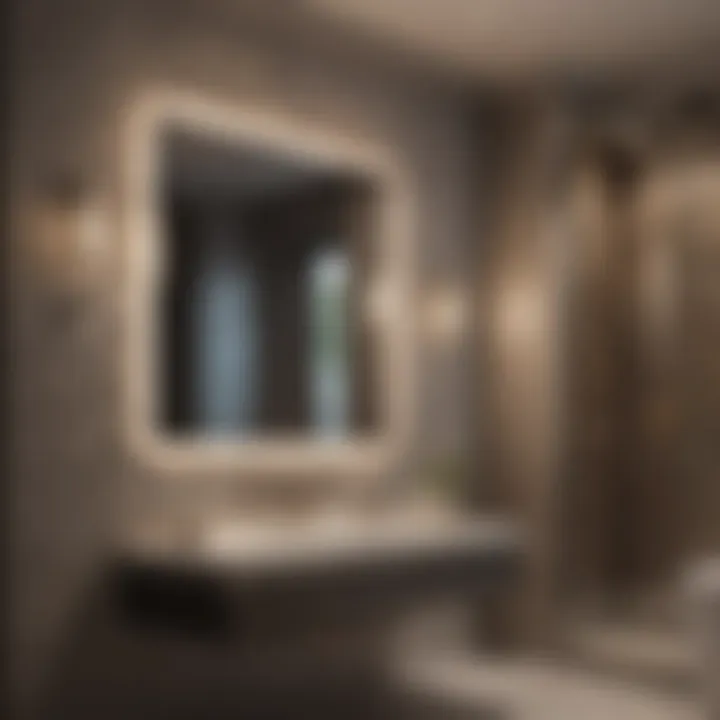
Intro
Fitting a new bathroom represents a significant decision for homeowners and renters alike. In this endeavor, understanding the diverse costs involved is crucial to ensuring a successful renovation. Various elements come into play in the financial breakdown, from material prices to labor expenses. A thorough analysis of these costs provides clarity and aids in the planning phase, contributing to a more effective budgeting process.
Although the pursuit of a new bathroom might seem straightforward, it is layered with complexities. Unforeseen expenses often arise, adding stress to what should be an exciting transformation. This article aims to dissect these costs meticulously, equipping individuals with the knowledge needed to manage their budget and make educated choices.
Aspects like design preferences, fixture options, and installation procedures are fundamental to grasping your financial implications. Each decision carries weight, affecting both functionality and aesthetics of the space. Understanding trends, styles, and visual ideas assists in aligning your needs with your budget.
This comprehensive guide also emphasizes the importance of discerning both common and hidden expenses. Thus, homeowners can create a serene, stylish environment that harmonizes with their personal taste while avoiding common pitfalls in the fitting process.
Overview of Bathroom Fitting Costs
Understanding the financial implications of fitting a bathroom is essential for homeowners. The costs can vary widely, influenced by several factors. Recognizing these elements helps in setting a realistic budget and avoiding unexpected expenses.
Understanding the Budget Scope
Establishing your budget requires a clear assessment of what the project involves. Start by defining your goals. Are you aiming for a complete renovation or simple updates? Knowing this will guide your financial planning. Typically, one should include the costs of materials, labor, and any additional fees such as permits. Creating a detailed budget can prevent overspending and ensure the project stays aligned with your expectations. Consider setting aside an extra 10-20% for unforeseen expenses.
Typical Cost Ranges
Bathroom fitting costs can span a broad range depending on the scale and style of the renovation. Generally, small bathroom renovations might start at around $5,000. For medium spaces, the average cost often lands between $10,000 and $15,000. High-end luxury fittings could easily exceed $20,000. A good approach is to gather multiple quotes from contractors to safeguard your budget. Some typical expenses include:
- Fixtures (toilets, sinks, bathtubs)
- Cabinetry
- Flooring materials
- Labor expenses
Factors Influencing Costs
Several elements can markedly swy the overall cost of a bathroom fitting. Key factors include:
- Size of the Bathroom: Larger spaces naturally require more materials and labor.
- Quality of Materials: Selecting high-end materials increases your costs significantly, while budget options can save money but might reduce durability.
- Labor Costs: Hiring skilled professionals usually raises expenses, while DIY work might reduce them but can introduce risks if you're inexperienced.
- Design Complexity: Customized designs or intricate layouts may require more work, subsequently inflating costs.
"Understanding these factors allows homeowners to make informed choices, which can lead to both financial and aesthetic satisfaction."
Materials and Fixtures
The choice of materials and fixtures plays a critical role in the overall cost and aesthetic appeal of a bathroom fitting. Homeowners must recognize that every element, from tiles to taps, contributes not only to the budget but also to the long-term functionality and style of the space. Understanding the costs involved in each category of materials and fixtures is essential for effective budget allocation.
Choosing Sanitary Ware
Sanitary ware is fundamental in bathroom design. This includes toilets, sinks, and bidets, each offering different styles and price points. When choosing sanitary ware, homeowners should consider durability, maintenance, and design compatibility.
For instance, a wall-hung toilet might offer a modern look while saving space, but it can be more costly than traditional floor-mounted options. Brands such as Kohler and Grohe provide a variety of choices. Prices for basic models start at around $150, while premium options can exceed $1,000. It is wise to balance aesthetics and functionality to ensure lasting satisfaction.
Types of Flooring Options
Flooring is another important aspect of bathroom fittings. It must withstand moisture and provide safety. Homeowners commonly choose between tiles, vinyl, and laminate.
- Tiles are durable and water-resistant. Ceramic tiles begin at about $1 per square foot, while porcelain can cost double.
- Vinyl is cost-effective and easy to install. Prices can range from $0.50 to $3 per square foot.
- Laminate, while less common in bathrooms, provides a wood-like appearance but may require more care against water damage.
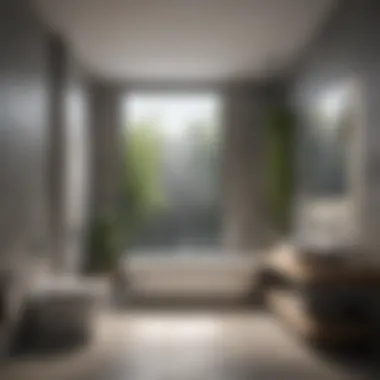

Choosing the right flooring involves considering both the installation costs and long-term durability.
Wall Finishes and Their Costs
The walls of a bathroom require finishes that promote cleanliness and aesthetic appeal. Common choices include paint, tiles, and wallpaper. Each option varies considerably in cost and benefits:
- Paint is affordable and customizable, with good-quality bathroom paint starting at around $25 per gallon.
- Tiles offer a waterproof surface and stunning visual appeal but can be labor-intensive and costly to install. The price for tile can range from $0.50 to $30 per square foot, depending on the material.
- Wallpaper is unique but requires specific preparations and materials to resist moisture. Costs can range from $20 to $100 per roll.
Overall, the finish must complement other design elements while being practical for bathroom conditions.
Cabinetry and Vanity Pricing
Cabinetry and vanities significantly influence the storage capacity and look of the bathroom. Custom cabinetry can range from $500 to over $3,000, based on size and materials. Pre-manufactured options provide a more budget-friendly alternative, typically priced between $200 to $1,500.
Considerations for cabinetry include:
- Material: Wood cabinets are sturdy but pricier; laminate is cheaper but may not offer the same durability.
- Style: Choosing between modern, traditional, or transitional designs can impact the cost.
- Size: Larger vanities offer more storage but increase the cost significantly.
Ultimately, striking a balance between budget and custom preferences is essential for satisfactory results.
Labor Costs
Labor costs represent a significant portion of the overall expense when fitting a bathroom. These costs are essential to consider because they vary widely based on factors such as the complexity of the project, location, and the reputation of the professionals involved. A clear understanding of labor costs helps homeowners and house owners allocate their budget effectively, thus avoiding unexpected expenditures.
Hiring a Professional Installer
Opting for a professional installer can bring advantages for those unfamiliar with renovation projects. Skilled tradespeople not only ensure a higher quality of work but also typically possess the necessary licenses and insurance, providing peace of mind. When hiring a professional, it is advisable to seek multiple quotes for the project, as pricing can differ greatly among contractors. Furthermore, checking their credentials, customer reviews, and prior work enhances the reliability of the choice. The cost of hiring someone skilled may range from $25 to $100 per hour, which can quickly accumulate based on the time required for the job.
DIY Installation Considerations
For those with a more hands-on approach, DIY installation is an option that can save labor costs. However, it comes with its own set of challenges. Knowledge and experience play a crucial role in successful installations. Before opting for this route, it is wise to research and understand all aspects of the project. Common tasks like tiling, plumbing, or setting fixtures may seem straightforward, yet mistakes can be costly. Furthermore, consider whether you have the right tools for the job or if rental costs will offset the savings. Carefully assessing your skills is necessary to avoid potential issues down the road.
Hidden Labor Charges
Often overlooked, hidden labor charges can impact the final cost significantly. Common hidden charges include fees for unforeseen complications that may arise during the installation. For instance, structural issues, outdated plumbing, or electrical systems might require additional time or resources. Thus, when obtaining quotes, it is advisable to ask contractors about possible extra charges and how they handle complications. A transparent contractor will often include contingencies in their estimates, allowing for a more accurate budget.
Hidden labor charges can add anywhere from 10% to 30% to the expected costs, making prior investigation vital to ensure a comprehensive budget plan.
Ultimately, clearly understanding labor costs provides a solid foundation for financial planning during a bathroom renovation. Knowing the potential costs involved with professional contractors as compared to DIY projects can help individuals make informed choices. Being aware of hidden charges ensures that financial surprises do not derail the intended project.
Additional Costs to Consider
When planning to fit a new bathroom, many homeowners focus primarily on the visible aspects like tiles, sanitary ware, and fixtures. However, the category of additional costs can significantly impact the overall budget. Addressing these hidden expenses is vital for a realistic financial plan. Ignoring these elements can lead to unexpected and often substantial overages.
Plumbing Modifications
In many cases, existing plumbing may not suit the design or layout of the new bathroom. Adjustments might be necessary to reroute pipes or install new drainage systems. Plumbing modifications can become a significant portion of the overall cost. Standard costs generally range, but expect to spend anywhere from a few hundred to several thousand dollars, depending on the complexity of the changes.
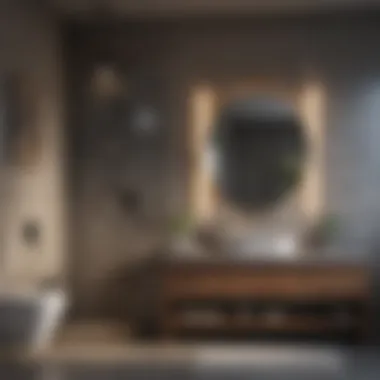
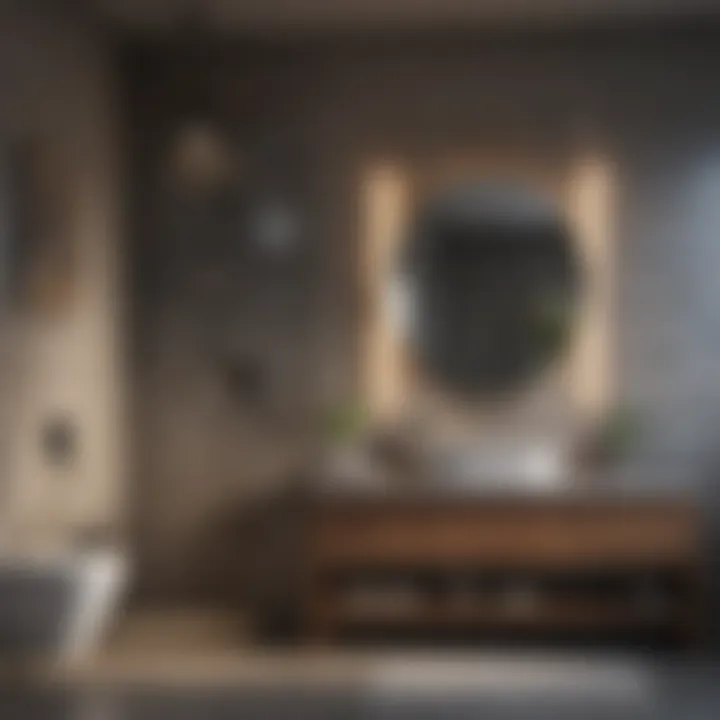
Furthermore, not all plumbing updates are visible. For instance, old pipes may need replacement for improved water pressure and efficiency. It is wise to consult a professional for a detailed estimate on costs before proceeding with any design decisions.
Electrical Work Requirements
Another often overlooked area is electrical work requirements. Installing new lighting, outlets, or even heated floors will require electrical work. Depending on local codes, this may need to be done by a licensed electrician. Costs can vary widely but budgeting at least $500 to $1,500 for electrical updates is prudent. Additionally, inadequate existing circuits may need upgrading to handle increased power loads.
Safety is paramount. Hence, ensure that all electrical work follows regulations to prevent hazards in the future. Failure to adhere to these can lead to even higher expenses down the line.
Permits and Regulations Fees
Permits and regulations fees can be a minor or major factor in renovation costs, depending on local laws. Fitting a bathroom typically requires various permits to ensure compliance with zoning laws and safety regulations. These fees can vary widely by location. In some areas, costs may be negligible, while in others, they can reach upward of one thousand dollars.
Many homeowners overlook the need for permits, potentially creating legal complications. Always verify what permits are required in your area and budget accordingly.
Waste Disposal Costs
Lastly, waste disposal costs are essential to account for during a bathroom renovation. When old fixtures and materials are removed, responsible disposal is necessary. Many municipalities charge fees for dumping construction waste.
Depending on the project scope, costs may range from $50 to several hundred dollars. Some contractors include waste disposal in their quotes, but if you are opting for a DIY approach, make sure to investigate local disposal options ahead of time.
Key Takeaway: Understanding and planning for these additional costs can prevent budget overruns, ensuring a smoother renovation process.
Cost-Saving Strategies
In any renovation project, finding ways to save money can make a significant difference in the overall budget. For bathroom fitting, implementing cost-saving strategies is essential. These strategies not only facilitate affordability but also help in achieving a balance between quality and expense. They empower homeowners and renters to make informed decisions without compromising on the final aesthetics.
When approaching a bathroom remodel, one must consider various aspects that could lead to reduced costs. Focusing on material selection, timing of the project, and potential discounts can enhance financial efficiency.
Selecting Affordable Materials
Opting for affordable materials is a pivotal aspect of saving costs in a bathroom fitting project. Many homeowners assume that quality always translates to a higher price, but this is not true. Numerous brands offer high-quality yet cost-effective options that can meet aesthetic and functional needs. Shopping from local suppliers or alternative home improvement stores often leads to better pricing.
Certain materials might offer a similar look to more expensive options without stretching the budget. For instance, vinyl flooring can mimic the appearance of high-end tiles and comes with added benefits of being waterproof and easy to clean. In terms of sanitary ware, opting for brands like American Standard or Kohler can provide a balance between quality and price. Additionally, it is wise to avoid high-end custom cabinetry unless absolutely necessary.
Timing Your Renovation
Timing plays a crucial role in saving costs during a bathroom fit-out. Seasonal variations can significantly impact pricing on both materials and labor. Contractors often face a busy schedule during spring and summer months, which may lead to increased quotes. On the other hand, undertaking renovations during off-peak seasons, such as late fall or winter, can result in discounted rates.
Moreover, plan your renovation meticulously. Aim to align your project with seasonal sales events or holiday markdowns. Plan about a month ahead to coordinate timing, as many suppliers plan big sales that could align with your project needs.
Exploring Discount Options
Exploring discount options can uncover potential savings in various areas of your bathroom renovation. Many retailers offer clearance sales or open-box discounts on items that are still in excellent condition but might have cosmetic flaws.
Additionally, utilizing online platforms can provide substantial savings. Websites like Reddit often feature discussions about local deals, DIY renovations, and promotions. Joining Facebook groups related to home improvement can also give insight into exclusive deals and discounts shared by members.
Furthermore, consider utilizing local thrift stores or charity organizations, which may have surplus materials or fixtures available at a fraction of retail prices. A little extra effort in searching for discounts can lead to significant savings on your renovation project.
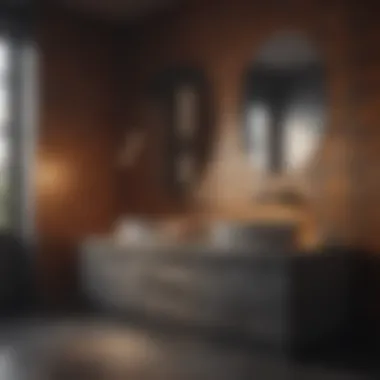
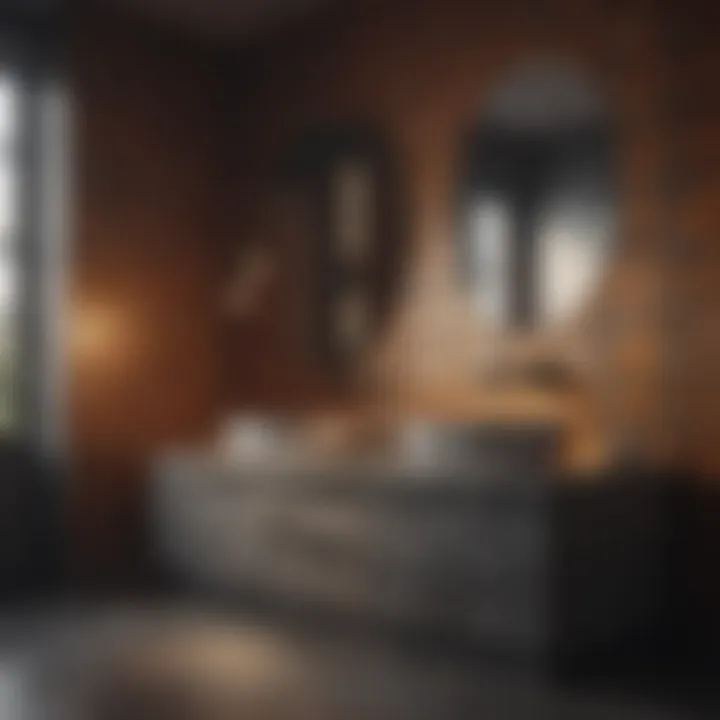
"Implementing strategic cost-saving measures is paramount to achieving your desired bathroom renovation without overspending."
By prudently selecting materials, timing renovations smartly, and exploring all discount options, homeowners can create a functional and elegant bathroom space that honors their budget.
Case Studies of Bathroom Fitting Costs
In the process of planning a bathroom renovation, learning from case studies can be invaluable. These real-life examples provide insights into how various factors influence overall fitting costs. They highlight distinct scenarios, enabling homeowners to grasp the financial implications of their design choices. Understanding these case studies helps to inform budget planning and decision-making, ultimately leading to successful renovations that meet aesthetic and functional expectations.
Small Bathroom Installations
Small bathroom spaces often present unique challenges. Homeowners might find themselves limited in terms of layout but they can achieve a stylish finish with effective planning. A typical small bathroom installation might range from $5,000 to $15,000, depending on materials and labor.
Key elements to consider include:
- Choosing compact fixtures: Opting for smaller sinks, toilets, and showers can save space and costs.
- Maximizing storage: Utilizing vertical space with tall cabinets or shelves can enhance functionality without extensive renovations.
- Using affordable materials: Vinyl flooring and stock cabinetry often provide good looks without excess expenses.
Real-life examples indicate that careful selection in these areas can lead to both a reduction in costs and enhanced usability.
Medium Bathroom Projects
Medium bathroom projects usually involve more significant alterations. These can range from $15,000 to $30,000. Homeowners often focus on improving their bathrooms’ aesthetics and incorporating better functionality.
Important considerations include:
- Balancing style and budget: Investing in mid-range products for items like vanities or tile can elevate the space without breaking the bank.
- Upgrading plumbing fixtures: This can significantly impact both the value and functionality of the space.
- Lighting choices: Adding ambient lighting and task lighting, which can be cost-efficient, improves usability and overall mood.
Case studies show that medium-sized projects can provide more options for customization while maintaining a reasonable overall budget.
Luxury Bathroom Fittings
Luxury bathroom fittings represent the higher end of the spectrum, with costs generally starting at $30,000 and going upwards significantly. This category often emphasizes superior materials and advanced features. A luxury setting might include spa-like elements such as soaking tubs, walk-in showers, and customized cabinetry.
Significant points in this category are:
- Premium materials: Utilizing marble or granite can enhance aesthetics but increase costs.
- High-end fixtures: Smart technology integration in showers and toilets can provide convenience but require careful budget consideration.
- Unique designs: Hire designers for bespoke solutions that not only add to the beauty but also the overall value of the home.
Many case studies reveal the return on investment potential luxury fittings can provide, as they often appeal to discerning buyers. These projects remind homeowners to ensure that their singular choices align with both their initial enjoyment and long-term property value.
"Investing in quality over quantity in bathroom renovations often pays off in the long run."
Final Thoughts on Budget Planning
In any project involving a bathroom fit, systematic budget planning is crucial. It governs all aspects, from material selection to the hiring of contractors. Effective budget planning ensures that unexpected financial burdens do not derail the progress of your renovations. Failing to establish a well-defined budget can lead to overspending, which ultimately affects the quality of choices you can make. Moreover, realistic budget considerations take into account current market trends, necessary modifications, and potential complications that might arise during the project.
Establishing a Realistic Budget
Setting a realistic budget is the foundation of a successful bathroom fitting. First, assess your financial situation. Consider how much you can afford to spend without compromising your everyday needs. This might involve reviewing your savings and possibly allocating funds from other areas. Planning should incorporate all potential expenses. This includes materials, labor, and any additional costs like permits or unexpected repairs. Use this comprehensive list as a guide when deciding where to allocate your funds. When setting your budget, remember to include a contingency fund. This extra 10 to 20 percent of the total budget can cover unforeseen surprises in the fitting process.
Evaluating Cost-Effectiveness
Once the budget is established, it is important to evaluate cost-effectiveness regularly. This involves continuously comparing the expenses incurred with the value gained from various choices. For example, investing in high-quality fixtures might appear to increase upfront costs. However, they tend to offer durability and long-term savings that outweigh initial expenses. Conversely, opting for lower-quality materials might save money in the short term, yet could lead to frequent replacements that incur higher future costs. Keep in mind to do your research on the brands and materials you choose. Their reputation for longevity and performance can often provide insight into their cost-effectiveness.
Evaluating cost-effectiveness also extends to labor. Hiring skillful professionals may seem pricier at first but can minimize costly mistakes that arise from inexperienced work. As you evaluate, compile a comparative analysis of the expenses against not only your aesthetic goals but also practical requirements. This continuous reflection on cost versus value will enhance the overall quality of your planned renovations.



